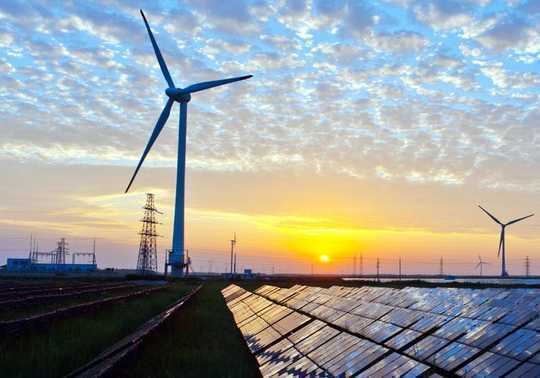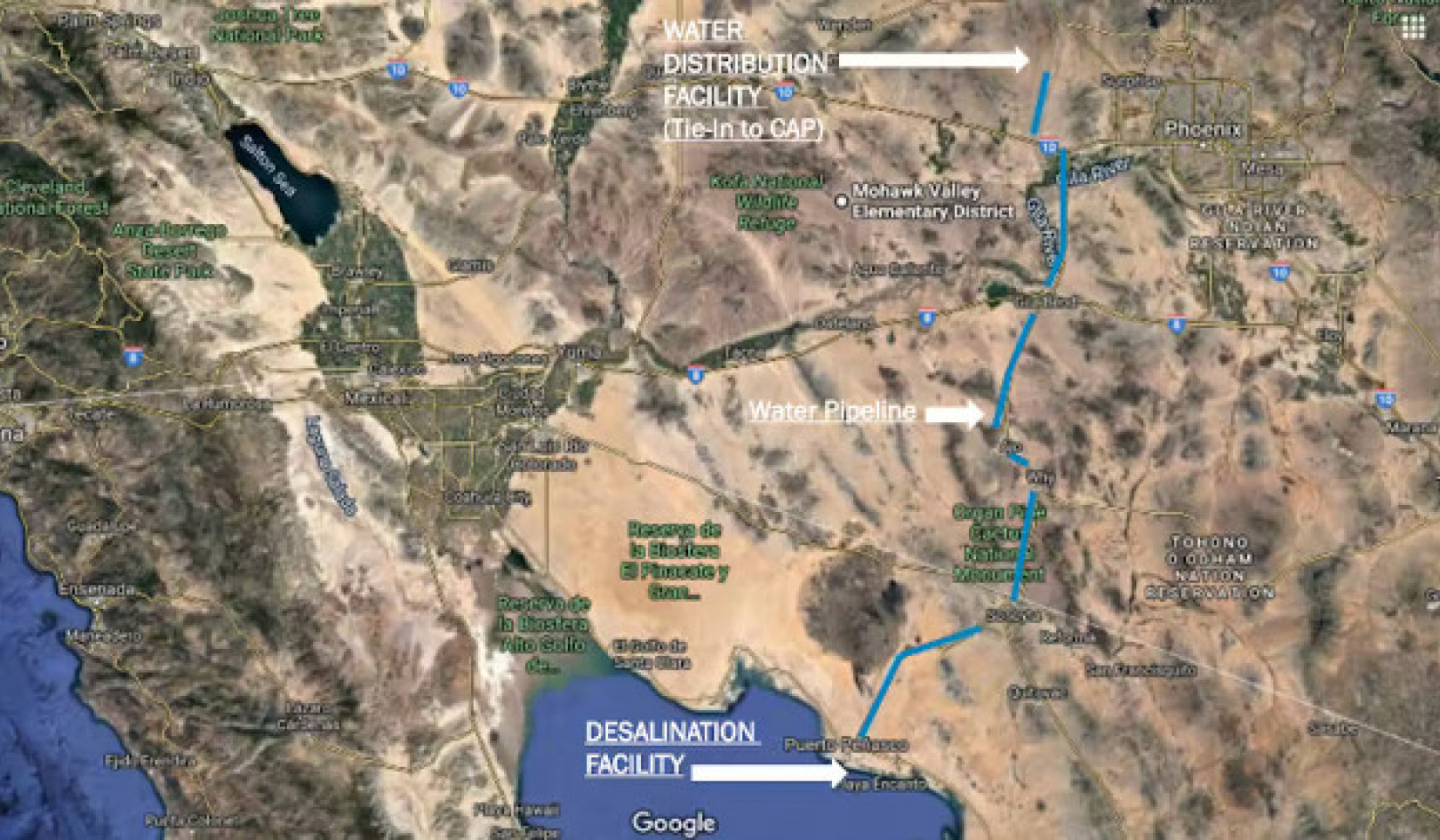
With the right mix, the grid can go fully renewable for the same cost and reliability as fossil fuels. Pixabay/Wikimedia Commons
In a speech to the National Press Club, Prime Minister Malcolm Turnbull declared that the key requirements for Australia’s electricity system are that it should be affordable, reliable, and able to help meet national emissions-reduction targets. He also stressed that efforts to pursue these goals should be “technology agnostic” – that is, the best solutions should be chosen on merit, regardless of whether they are based on fossil fuels, renewable energy or other technologies.
As it happens, modern wind, solar photovoltaics (PV) and off-river pumped hydro energy storage (PHES) can meet these requirements without heroic assumptions, at a cost that is competitive with fossil fuel power stations.
Turnbull and his government have also correctly identified energy storage as key to supporting high system reliability. Wind and solar are intermittent sources of generation, and while we are getting better at forecasting wind and sunshine on time scales from seconds to weeks, storage is nevertheless necessary to deliver the right balance between supply and demand for high penetration of wind and PV.
Storage becomes important once the variable renewable energy component of electricity production rises above 50%. Australia currently sources about 18% of its electricity from renewables – hydroelectricity in the Snowy Mountains and Tasmania, wind energy and the ever-growing number of rooftop PV installations.
Meanwhile, in South Australia renewable energy is already at around 50% - mostly wind and PV – and so this state now has a potential economic opportunity to add energy storage to the grid.
Pushing storage
To help realise this potential, in South Australia and elsewhere, the Clean Energy Finance Corporation (CEFC) and the Australian Renewable Energy Agency (ARENA) will spend A$20 million of public funds on helping flexible capacity and large-scale energy storage projects become commercially viable, including pumped hydro and batteries.
PHES constitutes 97% of worldwide electricity storage. The retail market for household storage batteries such as Tesla’s Powerwall is growing, but large-scale storage batteries are still much more expensive than PHES. “Off-river” pumped hydro has a bright future in Australia and many other countries, because there are very many suitable sites.
Wind and PV are the overwhelming winners in terms of new low-emissions electricity generation because they cost less than the alternatives. Indeed, PV and wind constituted half of the world’s new generation capacity installed in 2015 and nearly all new generation capacity installed in Australia.
Recently, we modelled the National Electricity Market (NEM) for a 100% renewable energy scenario. In this scenario wind and PV provide 90% of annual electricity, with existing hydro and bioenergy providing the balance. In our modelling, we avoid heroic assumptions about future technology development, by only including technology that has already been deployed in quantities greater than 100 gigawatts – namely wind, PV and PHES.
Reliable, up-to-date pricing is available for these technologies, and our cost estimates are more robust than for models that utilise technology deployment and cost reduction projections that are far different from today’s reality.
In our modelling, we use historical data for wind, sun and demand for every hour of the years 2006-10. Very wide distribution of PV and wind across the network reduces supply shortfalls by taking advantage of different weather systems. Energy balance between supply and demand is maintained by adding sufficient PHES, high-voltage transmission capacity and excess wind and PV capacity.
Not an expensive job
The key outcome of our work is that the extra cost of balancing renewable energy supply with demand on an hourly, rather than annual, basis is modest: A$25-30 per megawatt-hour (MWh). Importantly, this cost is an upper bound, because we have not factored in the use of demand management or batteries to smooth out supply and demand even more.
What’s more, a large fraction of this estimated cost relates to periods of several successive days of overcast and windless weather, which occur only once every few years. We could make substantial further reductions through contractual load shedding, the occasional use of legacy coal and gas generators to charge PHES reservoirs, and managing the charging times of batteries in electric cars.
Using 2016 prices prevailing in Australia, we estimate that the levelised cost of energy in a 100% renewable energy future, including the cost of hourly balancing, is A$93 per MWh. The cost of wind and PV continues to fall rapidly, and so after 2020 this price is likely to be around AU$75 per MWh.
Crucially, this is comparable with the corresponding estimated figure for a new supercritical black coal power station in Australia, which has been put at A$80 per MWh.
Meanwhile, a system developed around wind, PV and PHES and existing hydro can deliver the same reliability as today’s network. PHES can also deliver many of the services that enable a reliable energy system today: excellent inertial energy, spinning reserve, rapid start, black start capability, voltage regulation and frequency control.
Ageing system
Australia’s fossil fuel fleet is ageing. A good example is the pending closure of the 49-year-old Hazelwood brown coal power station in Victoria’s Latrobe Valley. An ACIL Allen report to the Australian Government lists the technical lifetime of each power station, and shows that two-thirds of Australia’s fossil fuel generation capacity will reach the end of its technical lifetime over the next two decades.
The practical choices for replacing these plants are fossil fuels (coal and gas) or existing large-scale renewables (wind and PV). Renewables are already economically competitive, and will be clearly cheaper by 2030.
Energy-related greenhouse gas emissions constitute about 84% of Australia’s total. Electricity generation, land transport, and heating in urban areas comprise 55% of total emissions. Conversion of these three energy functions to renewable energy is easier than for other components of the energy system.
Transport and urban heating can be electrified by deploying electric vehicles and heat pumps, respectively. Electric heat pumps are already providing strong competition for natural gas in the space and water heating markets. Importantly, these devices have large-scale storage in the form of batteries in vehicles, and thermal inertia in water and buildings. Well-integrated adoption of these technology changes will help reduce electricity prices further.
So wind, PV and PHES together yield reliability and affordability to match the current electricity system. In addition, they facilitate deep cuts to emissions at low cost that can go far beyond Australia’s existing climate target.![]()
About The Authors
Andrew Blakers, Professor of Engineering, Australian National University; Bin Lu, PhD Candidate, Australian National University, and Matthew Stocks, Research Fellow, ANU College of Engineering and Computer Science, Australian National University
This article is republished from The Conversation under a Creative Commons license. Read the original article.
Related Books
Drawdown: The Most Comprehensive Plan Ever Proposed to Reverse Global Warming
by Paul Hawken and Tom Steyer In the face of widespread fear and apathy, an international coalition of researchers, professionals, and scientists have come together to offer a set of realistic and bold solutions to climate change. One hundred techniques and practices are described here—some are well known; some you may have never heard of. They range from clean energy to educating girls in lower-income countries to land use practices that pull carbon out of the air. The solutions exist, are economically viable, and communities throughout the world are currently enacting them with skill and determination. Available On Amazon
In the face of widespread fear and apathy, an international coalition of researchers, professionals, and scientists have come together to offer a set of realistic and bold solutions to climate change. One hundred techniques and practices are described here—some are well known; some you may have never heard of. They range from clean energy to educating girls in lower-income countries to land use practices that pull carbon out of the air. The solutions exist, are economically viable, and communities throughout the world are currently enacting them with skill and determination. Available On Amazon
Designing Climate Solutions: A Policy Guide for Low-Carbon Energy
by Hal Harvey, Robbie Orvis, Jeffrey Rissman With the effects of climate change already upon us, the need to cut global greenhouse gas emissions is nothing less than urgent. It’s a daunting challenge, but the technologies and strategies to meet it exist today. A small set of energy policies, designed and implemented well, can put us on the path to a low carbon future. Energy systems are large and complex, so energy policy must be focused and cost-effective. One-size-fits-all approaches simply won’t get the job done. Policymakers need a clear, comprehensive resource that outlines the energy policies that will have the biggest impact on our climate future, and describes how to design these policies well. Available On Amazon
With the effects of climate change already upon us, the need to cut global greenhouse gas emissions is nothing less than urgent. It’s a daunting challenge, but the technologies and strategies to meet it exist today. A small set of energy policies, designed and implemented well, can put us on the path to a low carbon future. Energy systems are large and complex, so energy policy must be focused and cost-effective. One-size-fits-all approaches simply won’t get the job done. Policymakers need a clear, comprehensive resource that outlines the energy policies that will have the biggest impact on our climate future, and describes how to design these policies well. Available On Amazon
This Changes Everything: Capitalism vs. The Climate
by Naomi Klein In This Changes Everything Naomi Klein argues that climate change isn’t just another issue to be neatly filed between taxes and health care. It’s an alarm that calls us to fix an economic system that is already failing us in many ways. Klein meticulously builds the case for how massively reducing our greenhouse emissions is our best chance to simultaneously reduce gaping inequalities, re-imagine our broken democracies, and rebuild our gutted local economies. She exposes the ideological desperation of the climate-change deniers, the messianic delusions of the would-be geoengineers, and the tragic defeatism of too many mainstream green initiatives. And she demonstrates precisely why the market has not—and cannot—fix the climate crisis but will instead make things worse, with ever more extreme and ecologically damaging extraction methods, accompanied by rampant disaster capitalism. Available On Amazon
In This Changes Everything Naomi Klein argues that climate change isn’t just another issue to be neatly filed between taxes and health care. It’s an alarm that calls us to fix an economic system that is already failing us in many ways. Klein meticulously builds the case for how massively reducing our greenhouse emissions is our best chance to simultaneously reduce gaping inequalities, re-imagine our broken democracies, and rebuild our gutted local economies. She exposes the ideological desperation of the climate-change deniers, the messianic delusions of the would-be geoengineers, and the tragic defeatism of too many mainstream green initiatives. And she demonstrates precisely why the market has not—and cannot—fix the climate crisis but will instead make things worse, with ever more extreme and ecologically damaging extraction methods, accompanied by rampant disaster capitalism. Available On Amazon
From The Publisher:
Purchases on Amazon go to defray the cost of bringing you InnerSelf.comelf.com, MightyNatural.com, and ClimateImpactNews.com at no cost and without advertisers that track your browsing habits. Even if you click on a link but don't buy these selected products, anything else you buy in that same visit on Amazon pays us a small commission. There is no additional cost to you, so please contribute to the effort. You can also use this link to use to Amazon at any time so you can help support our efforts.
























